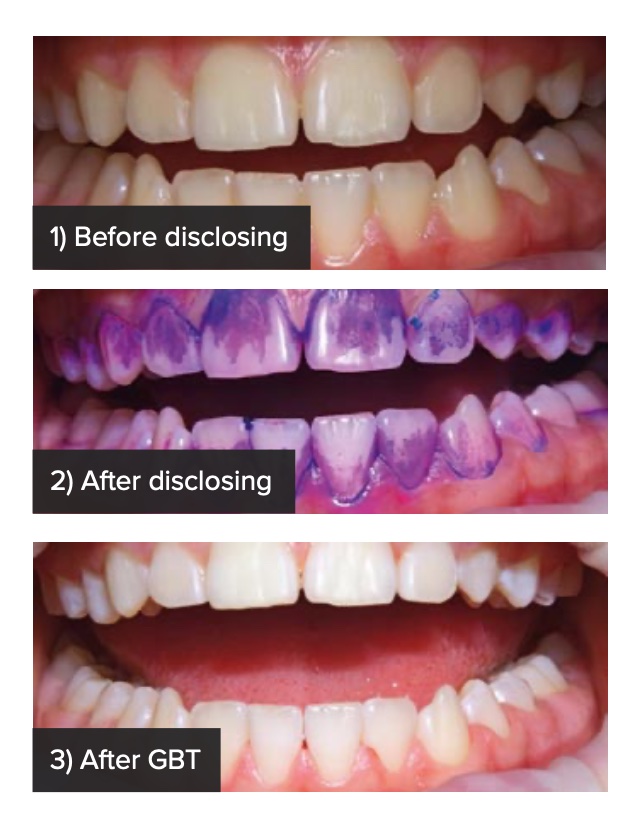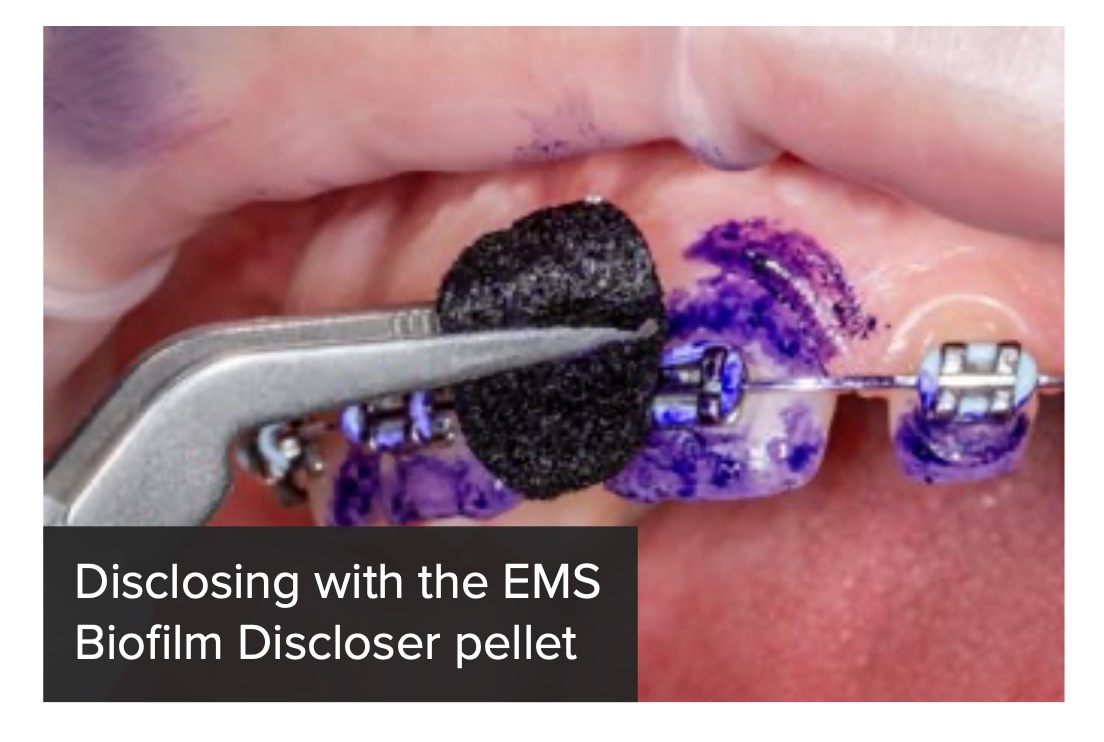Dr. Neha Dixit and Dr. Marcel Donnet argue that you can’t ignore what you see when it comes to keeping your teeth for life. Particular focus is given to Guided Biofilm Therapy and the use of a disclosing agent
Maintaining a healthy mouth is a never-ending battle, with the activity of the bacteria in the mouth never stopping. Therefore, an effective strategy is needed to keep our teeth for life and win this battle. In this matter, the key phrase is “good teamwork” between the patient and the dental professional delivering professional teeth cleaning.
Guided Biofilm Therapy
The modern, professional prophylaxis method, Guided Biofilm Therapy (GBT), follows a strategic approach and aims to maintain teeth for life. In fact, GBT guides the clinician to perform the best prophylaxis, including offering the highest patient comfort with maximum treatment efficiency. This, in turn, increases patient compliance to strive for improved oral hygiene outcomes through motivation and education. This protocol follows eight logical and modular steps to simplify the treatment and follow-up.
Within these steps, near the beginning (step 2), the clinician discloses the biofilm with a specific colourant showing where it is located. This crucial step is the true guide of “Guided Biofilm Therapy”: It will help the clinician remove the supragingival biofilm thoroughly, ensuring a clean mouth. It is also a facilitator for a teamwork approach between the clinician and patient, making the third step of GBT possible – to motivate the patient.
Let us begin by understanding more about the process of disclosing.

What is a disclosing agent?
Biofilm is not visible to the naked eye. Therefore, the benefit of a material that, when applied, makes biofilm clear, highlighting areas that have been missed during daily tooth brushing.
The importance of using a disclosing agent is often neglected. However, GBT uses Pre-Loaded Pellets, which are easy to use with a pair of tweezers. The pellet colours only areas where it has made contact with biofilm.
Retracting the cheeks or tongue is unnecessary, making the procedure quick and localised, preventing any spills or mess.
It is also important for the patient to know that during GBT, the dye used in their mouth is pleasantly flavoured, not irritating to the gums, and is biocompatible.
It provides a significant contrast, enabling both the patient and the clinician to see all biofilm.
There has been significant resistance to using a disclosing agent in the past, as it was only available in the form of a tablet or liquid – staining the tongue, lips and teeth. This made it a challenge for clinicians, as patients were unhappy with the colour remaining on their lips, tongue etc., following their teeth cleaning appointment.
Patients love to see how well they have been brushing their teeth.
The colour applied to the teeth allows improved visualisation of the biofilm for the clinician and helps the patient see where they need to improve their brushing technique. It can also show the necessity of interdental cleaning because of the bacterial accumulation in spaces between teeth. All this is only achievable thanks to this disclosing step.
Once the patient recognises their brushing capacity and notices the improvement from one GBT session to another, motivating them to carry out an effective home care regimen becomes easier.

Disclosing agent: Snapshot of where patients must improve oral hygiene
Disclosing not only helps with motivation and self-evaluation but also opens doors to re-education in terms of personalised patient instruction and the effectiveness of oral hygiene maintenance. Questions like, ‘which interdental aid should I use?’ and ‘why is there so much biofilm in these areas?’ can be answered.
Patients with orthodontic brackets, in particular, have benefitted hugely following disclosing. These patients, including teenagers, can see which areas must be focused upon during teeth cleaning.
Patients with implants, porcelain veneers, and multiple fillings have also benefitted significantly since disclosing ensures these areas, upon which they have spent a lot of money, are kept biofilm-free. Disclosing increases patient compliance, builds trust and confidence, plus encourages teamwork.

Using a disclosing agent is not an option; it is obligatory and ethical practice during prophylaxis. Patients need to know and have the right to see their biofilm. Whether or not patients have bleeding gums, a discharge from the gums (i.e., an infection), healthy teeth or implants, they should demand to see the biofilm in their mouth.
In addition, disclosing assures quality treatment, as the patients know they are paying for 100% removal.
Disclosing breaks down many communication barriers and reduces inhibition. Patients need visual aids to improve their understanding. By disclosing before oral hygiene instruction during GBT, we can help patient engagement with visual support, especially in the case of patients who are mistaken about how well they clean their teeth. Patients are often blind to the reality when they have invested in expensive toothbrushes and regularly use interdental aids. These patients think they do enough, and it does not occur to them that there might be areas that they have missed. They cannot ignore what is before their own eyes.
Disclosing is indisputably moving away from common advice to specific, tailor-made instructions on oral hygiene for patients.
Bearing in mind that the struggle with oral bacteria never ends, it is essential to embrace a teamwork approach between the clinician and the patient for the best treatment outcomes.
GBT enables the professional to perform thorough and efficient biofilm removal using a disclosing agent. From the patient’s point of view, to continue the benefits of GBT treatment, the disclosing and motivation steps promote good oral hygiene and daily self-discipline. GBT is genuinely the best choice today to keep teeth for life.
For more information www.GBT-finder.com

This work is licensed under Creative Commons Attribution-NonCommercial-NoDerivatives 4.0 International.


